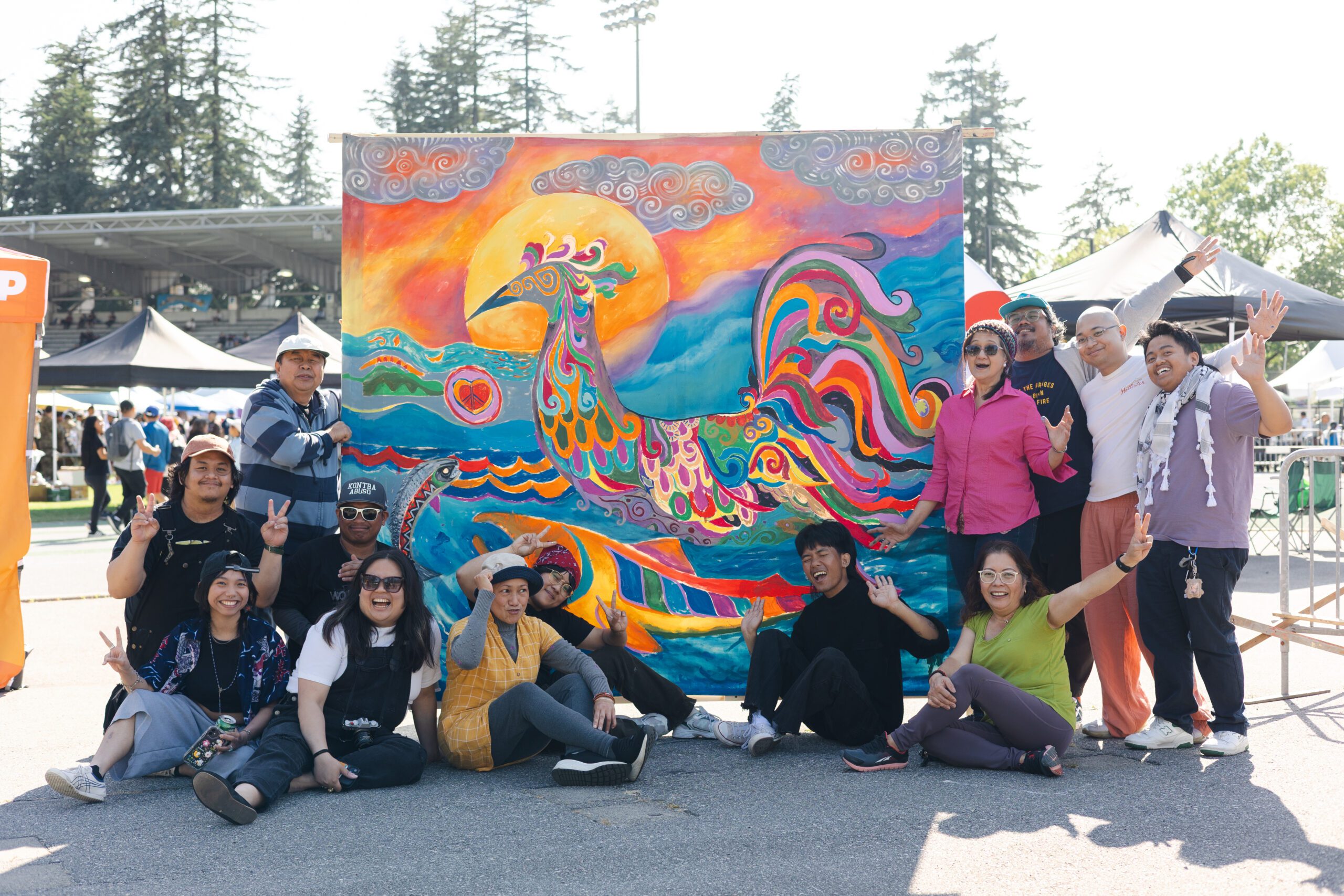
When community shows up
October 8, 2025
By Amy Romer
Photos by Jamie Poh
On April 26, a deadly incident took place at the end of the Lapu Lapu Day festival in Vancouver where a car drove into a crowd, killing 11 people and injuring dozens more. The emotional toll has been heavy. Grief, helplessness, and guilt haunt the community, even those who walked away physically unscathed.
Festival organizer Filipino BC soon launched the Kapwa Strong Fund to support those affected, with help from United Way BC. Vancouver Foundation moved quickly too: not to lead, but to listen. “We needed to understand if Filipino BC even wanted us to participate,” said Craig Hikida, the vice president of donor services at Vancouver Foundation.
The answer came quickly. Vancouver Foundation rallied around the Kapwa Strong Fund, raising more than $82,000 in just weeks from more than 50 donor advised funds. The funding supports grassroots groups offering trauma-informed mental health and healing initiatives. “It was a time for unity, not competition,” Hikida explained.
Beyond funding, Vancouver Foundation also helped Filipino BC navigate systems and scale its work. “We had to put into action in five weeks what we had planned to do in five years. Having this amazing mentor helped us to scale quickly,” said RJ Aquino, Filipino BC’s co-founder. “Working with Vancouver Foundation has been one of the greatest blessings of all time.”
 Bert Monterona is the founder of PANCIT.
Bert Monterona is the founder of PANCIT.
Holding space for grief and guilt
Many still carry unspoken pain. “Many folks haven’t processed the trauma or talked about it at all,” said Michelle Wing, a Filipinx* and Chinese trauma therapist offering counselling to those affected by the tragedy. “Survivor’s guilt is weighing heavily on many. ‘I was going to go and didn’t. Why this four-year-old and not me?’”
“It’s a role we’ve been socialized in, being helpers,” said Wing. Because of the helper identity, many of Wing’s clients feel they’re undeserving of support, especially women. That’s why she offers inclusive group healing circles for women and gender-diverse people affected by the events at Lapu Lapu Day, which she said is to give them “permission to prioritize [their] own emotional, spiritual, and mental health.”
Her sessions are subsidized by a Kapwa Strong grant, through Kathara Society Pilipino Indigenous Arts Collective where she serves as a board member. Wing’s sessions reflect Filipino values, language, and lived experience. Though the counselling is short-term, the impact is visible. Even knowing there is a place to go is a relief for people, she said. Despite the pain, these healing spaces have forged powerful connections. “It’s been really extraordinary to witness how people have been showing up for each other,” said Wing.
 PANCIT art therapy participants collaborated on this public mural at the Pinoy Festival, which launched in June.
PANCIT art therapy participants collaborated on this public mural at the Pinoy Festival, which launched in June.
Art as collective therapy
Art can reach what words can’t. This belief drives the work of art therapy collective PANCIT and its founder, muralist and educator Bert Monterona. He and his wife started hosting free weekly community art therapy workshops right after the tragedy, before any funding arrived. Twenty participants showed up to the first session.
“It was immediate. We needed to do it for our community,” said Diane Zapata, board vice chair of Migrante BC and workshop participant. Migrante BC, which runs PANCIT, was among the first to receive a Kapwa Strong grant.
Zapata was volunteering at the festival and witnessed the aftermath firsthand. Monterona’s workshops have offered her solace. “It’s something very new for me, and it’s unlocking something in me that’s very healing,” she said.
Developed in consultation with psychologists, Monterona’s approach emphasizes curiosity over skill. He’s worked with trauma survivors in the Philippines, including sexual assault survivors. “Trauma healing should be long-term,” he said.
About a dozen people returned for more art therapy each week. Workshops started with a short technical lesson: still life drawing, shading, use of paint, followed by time to create. Sharing was encouraged but not required. “It’s not a classroom,” Zapata explained. “It’s more of being present with your community, being together.”
 Volunteer Raya Tolentino (centre) put their finishing touches on the mural at the Pinoy Festival.
Volunteer Raya Tolentino (centre) put their finishing touches on the mural at the Pinoy Festival.
Reclaiming space, moving forward
As the community finds a way forward, Aquino hopes Lapu Lapu Day will ultimately be remembered not just for its tragedy, but as a celebration of Filipino history and heritage of resistance.
Aquino said Filipino BC has rooted its community response in strong cultural values. At the centre of it is the Kapwa Centre for Community Resilience, a space established for community members to gather, rest, and heal. It’s a fitting name, as “kapwa” means interconnectedness. At first, it was more about connecting people with resources. These days, it’s begun to shift more focus to joy, movement, and community celebrations, he said.
The Kapwa Centre has found temporary homes around the city, but Aquino and Filipino BC are advocating for a more permanent version of it — a cultural centre that can be consistent and welcoming for anyone affected to visit.
Aquino said that while there’s traditionally been stigma around openly discussing mental health issues in Filipino communities, that’s beginning to change with the current generation and the Kapwa Centre is one way for them to deal with the trauma. “They may not recognize what they’re experiencing is trauma. But it’s therapeutic to be present with each other,” he said.
*Filipinx is a gender-neutral term used to refer to people of Filipino descent.
This story is featured in our 2025 Vancouver Foundation magazine. Read the magazine to explore other stories of courage, resilience, and generosity.

